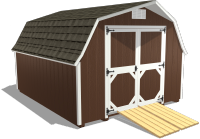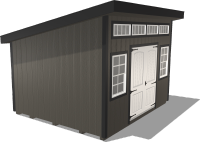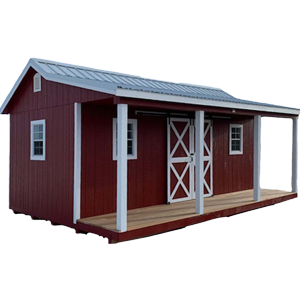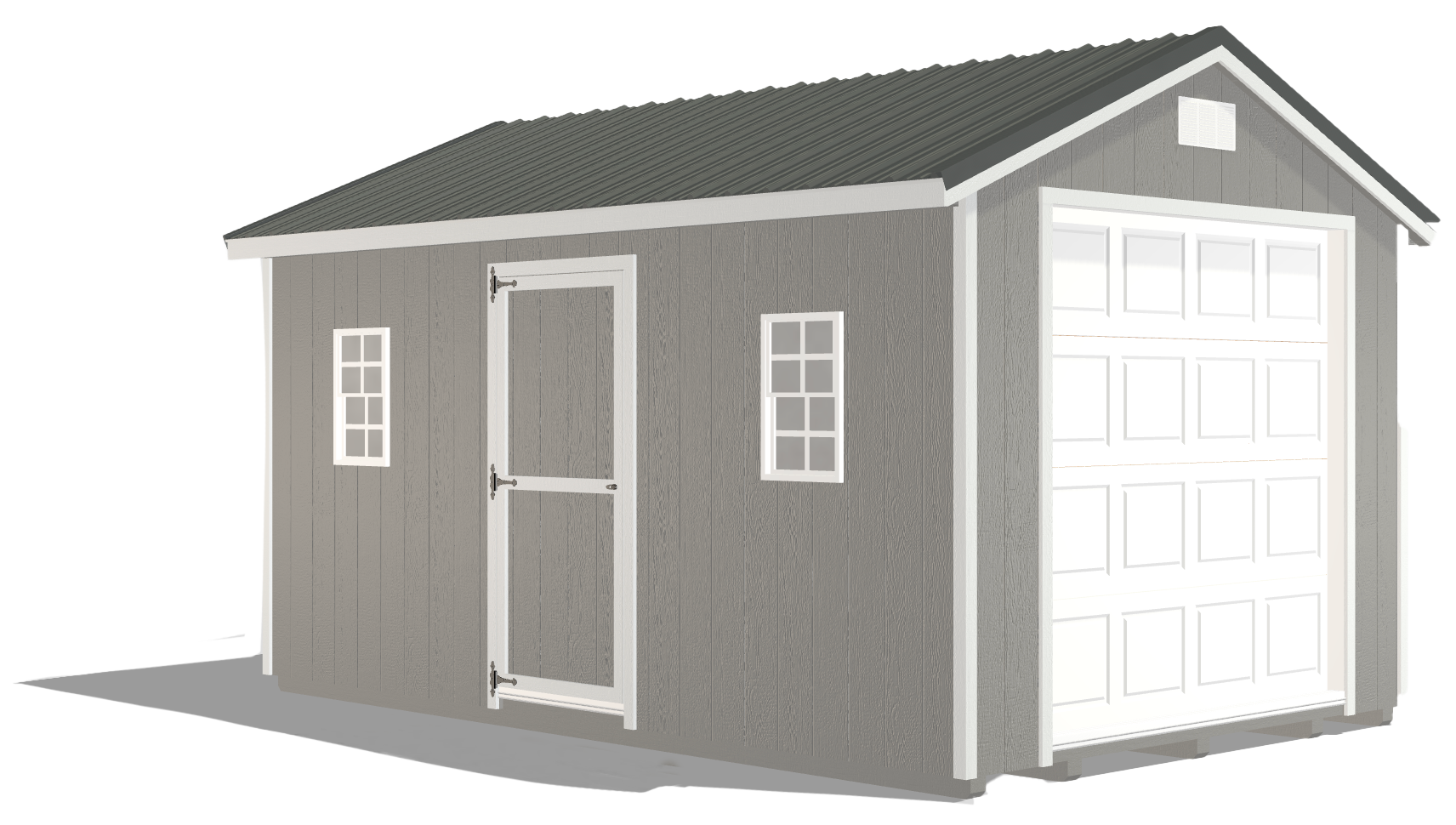Winter Wonders: Growing Hardy Winter Plants in Your Greenhouse
by Dakota Storage Buildings, on November 06, 2024

You do not have to say goodbye to fresh homegrown produce in the winter. With a greenhouse for backyard gardening, you can extend your growing season and continue harvesting nutritious crops throughout the cold months. They help regulate temperature and humidity, which supports plant growth even during the coldest months. By creating a controlled environment, greenhouses allow you to grow cold-hardy plants, root vegetables, and fast-growing microgreens, even when outdoor temperatures drop. Let’s explore the best winter plants for your greenhouse and practical tips on maintaining conditions to ensure productive winter gardening.
Cold-Hardy Leafy Vegetables for Your Greenhouse
Leafy greens are some of the hardiest winter vegetables you can grow throughout the season. Not only do they tolerate cooler temperatures, but they also provide a fresh supply of nutritious greens when outdoor gardens are no longer producing. Here are three of the most resilient cold-hardy greens you can grow in your greenhouse for backyard gardening.

Kale
Kale is a winter garden champion. This cold-tolerant vegetable can withstand frost, and some varieties even taste sweeter after being exposed to cooler temperatures. Kale’s hardiness makes it an excellent choice for greenhouse gardening in winter. Ensure your kale has enough space to thrive by ensuring proper spacing between plants. Water sparingly, as excess moisture during colder months can lead to root rot.
Spinach
Spinach is another excellent choice for low-light and cool conditions, making it perfect for winter greenhouse gardening. Spinach thrives in cooler temperatures, but it is important to prepare your soil well. Use organic matter to ensure good drainage and prevent bolting. Spinach prefers consistent moisture, however, you should avoid overwatering, especially when temperatures fluctuate.
Swiss Chard
Swiss chard is known for its vibrant stems and leafy greens, which are not only visually appealing but also highly resilient to cold weather. Swiss chard can produce leaves throughout the winter months in a greenhouse, making it a reliable choice for continuous harvests. Succession planting, where you stagger plantings every few weeks, can ensure a steady supply of fresh chard.
Sweeten Your Winter Harvest With Root Vegetables
Root vegetables are perfect for winter gardening because they thrive in cooler soil conditions and, in many cases, become even sweeter with the cold. Let’s look at three of the best root crops for winter greenhouses.

Carrots
Carrots are a winter favorite, as they actually develop a sweeter taste when grown in cooler temperatures. The cold weather causes the sugars in the carrots to concentrate, resulting in a richer flavor. For winter greenhouse success, be sure to prepare the soil deeply and add mulch to help retain warmth and moisture. Carrots require loose, well-drained soil to avoid misshapen roots.
Parsnips
Parsnips are well-suited for winter harvests and, like carrots, their flavor improves after frost exposure. They need deep soil to grow properly, so ensure your greenhouse beds are well-prepared with rich, loose soil. Keep the soil moist but not waterlogged, as parsnips need consistent moisture for proper growth, especially during the colder months.
Radishes
Radishes are one of the fastest-growing winter crops, making them ideal for quick harvests. These small root vegetables can be grown and harvested in a matter of weeks, even in cooler conditions. Winter varieties like ‘Icicle’ and ‘Black Spanish’ thrive in low temperatures, and radishes benefit from consistent, shallow watering to maintain their rapid growth.
Grow Fresh Microgreens and Sprouts All Winter Long
For those looking for quick, nutritious harvests, microgreens and sprouts are perfect winter greenhouse crops. They require minimal space and grow rapidly, making them ideal for frequent harvesting during the colder months.

Microgreens
Microgreens have become increasingly popular due to their high nutritional content and fast-growing nature. They can be grown in trays within a greenhouse and harvested in as little as 7–14 days. Varieties like mustard, arugula, and radish are great options for microgreens. For a successful harvest, you must provide adequate light and maintain proper airflow to prevent mold. Consider using grow lights if natural light is limited during winter.
Sprouts
Sprouts are one of the easiest crops to grow indoors during the winter. With minimal equipment — a jar or tray and some seeds — you can grow alfalfa, mung beans, or broccoli sprouts. These nutrient-packed greens grow rapidly with little light or soil. Be sure to soak your seeds thoroughly before planting, and rotate crops regularly to maintain a continuous supply of fresh sprouts throughout the winter months.
Essential Winter Maintenance for a Productive Greenhouse
Maintaining your greenhouse for backyard gardening during the winter is crucial to ensure successful crops. Greenhouse maintenance, including temperature control, humidity management, and lighting solutions, can greatly impact your harvest. Here are some important factors to consider.

Temperature Control
Keeping your greenhouse warm enough for winter vegetables without overheating is a delicate balance. You can use heaters, thermal blankets, or insulation to help regulate the temperature. Be mindful of temperature swings, and use a thermometer to monitor indoor conditions. Proper ventilation is also important to prevent overheating during warmer winter days.
Humidity Management
Cold air tends to be drier, which can cause winter plants to dry out if humidity levels are not maintained. Use a humidity gauge to ensure levels stay between 50-70% for most winter crops. Misting plants and placing water trays around the greenhouse can help maintain adequate moisture without causing overwatering.
Lighting Solutions
During winter, shorter days mean less natural light, which can impact plant growth. Consider installing grow lights to supplement natural light and keep your crops healthy. Position lights to ensure even coverage, and choose full-spectrum LED grow lights that mimic natural sunlight for the best results.
Extend Your Growing Season with a Winter-Ready Greenhouse
Winter does not have to mean the end of your gardening season. With a greenhouse for backyard gardening, you have the opportunity to continue growing fresh, vibrant winter vegetables even when temperatures drop. Imagine harvesting crisp greens, hearty root vegetables, and nutrient-packed microgreens all through the winter. It is not only possible, but it can be incredibly rewarding to watch your greenhouse become a thriving oasis.
Keeping a greenhouse productive in winter is not just about choosing the right plants — it is about creating the perfect conditions for them to flourish. By balancing temperature, humidity, and light, you can foster an environment that supports growth, even during the darkest and coldest months. With thoughtful planning and maintenance, your greenhouse can offer a steady supply of fresh, homegrown food all year long. Ready to extend your growing season? Explore Dakota’s stock greenhouses and start making the most of your garden, no matter the season.

























